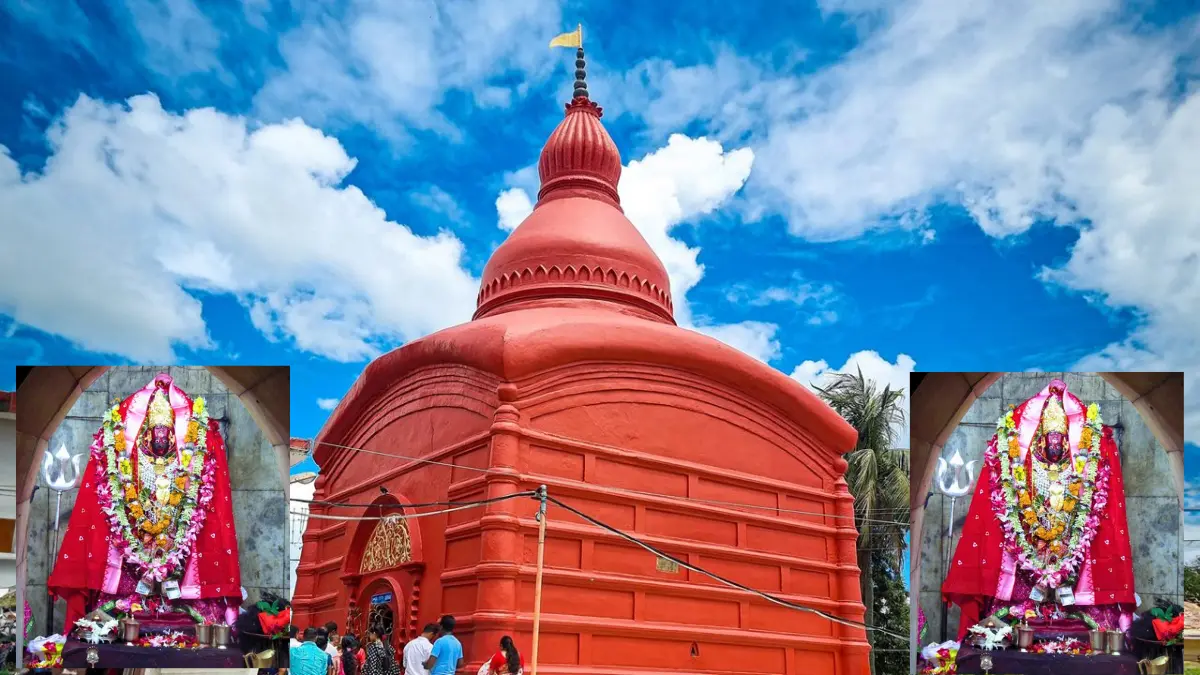Discover the Magnificence of Tripura Sundari Temple | Tripura Sundari Temple, Udaipur

The Tripura Sundari Temple, also known as Tripureshwari Temple, is one of the most revered shrines in India. Nestled in the serene landscapes of Udaipur, Tripura, this ancient temple is a significant pilgrimage site dedicated to Goddess Tripura Sundari, an incarnation of Mata Durga. Its deep historical roots, spiritual importance, and stunning architecture make it an essential destination for both pilgrims and travelers.
Tripura Sundari Temple history
The Tripura Sundari Temple, located in Udaipur, Tripura, is one of the oldest and most revered shrines in India. With a history dating back to the 15th century, this temple is deeply rooted in mythology, spirituality, and cultural significance.
Origins of the Temple
The temple was built around 1501 AD by Maharaja Dhanya Manikya, a ruler of the Manikya Dynasty in Tripura. Legend has it that the goddess herself instructed the king in a dream to establish the temple and install her idol. Following this divine guidance, the king dedicated the temple to Goddess Tripura Sundari, an incarnation of Mata Durga.
The temple is considered one of the 51 Shakti Peethas, sacred sites connected to Goddess Sati. According to Hindu mythology, when Lord Shiva carried the charred body of Sati, her right foot fell at this location, making it a spiritually significant site.
The Deities
The temple houses a 2-foot-tall idol of Maa Tripura Sundari, skillfully carved from Kasturi stone, serving as the main deity of worship. Accompanying it is a smaller idol known as Chhoti Maa, which is also highly venerated. Together, these idols represent the essence of divine femininity and strength.
Architectural Style
The temple is built in the shape of a kurma (turtle), earning it the title Kurma Peeth. This unique structure symbolizes the stability and strength of the earth, aligning with ancient Hindu temple architecture principles.
The sanctum sanctorum features elaborate carvings and traditional motifs, reflecting the exceptional artistry of its era. The temple is surrounded by natural beauty, including the Kalyan Sagar Lake, a sacred pond where devotees feed turtles and fish.
Mythological Significance
The temple’s mythology is closely tied to the story of Shakti Peethas and the cosmic energy of Goddess Shakti. The temple is believed to have immense spiritual power, attracting devotees from across India seeking blessings, fulfillment of wishes, and inner peace.
Modern Relevance
Throughout the centuries, the temple has evolved into a hub for cultural and spiritual events. It celebrates lively festivals, particularly during Diwali and Kartik Purnima, attracting thousands of devotees and visitors. The temple stands as a testament to devotion, heritage, and architectural magnificence.
Historical Significance of Tripura Sundari Temple

The temple is believed to have been constructed by Maharaja Dhanya Manikya in the 15th century. It holds a prominent place among the 51 Shakti Peethas, which are sacred sites associated with Goddess Shakti. According to legend, the temple marks the spot where the right foot of Sati, an incarnation of Goddess Shakti, fell.
The deity worshipped here is Maa Tripura Sundari, represented by a 2-foot-tall idol made of Kasturi stone. A smaller idol, known as Chhoti Maa, is also enshrined and venerated alongside the main deity.
Architectural Splendor of the Temple
The Tripura Sundari Temple boasts a distinct architectural style, resembling the shape of a turtle, earning it the name Kurma Peeth. The temple’s design is both unique and symbolic, reflecting elements of traditional Hindu temple architecture.
Its sanctum houses intricately carved pillars, sculptures, and a serene atmosphere that invokes spirituality. The temple complex also includes a sacred pond, Kalyan Sagar, where devotees feed fish and turtles as a sign of reverence.
Read this also: Discover Dwarka Temple Timings for 2025: Darshan Hours, Aarti Schedule, VIP Bookings & Must-Know Updates!
Tripura Sundari temple timings
The Tripura Sundari Temple is open to visitors and devotees every day. Here are the typical opening and closing times of the temple:
- Morning Timings: 6:00 AM to 12:00 PM
- Evening Timings: 3:00 PM to 9:00 PM
Best Time to Visit
- Morning Hours: The early hours are ideal for seeking blessings and experiencing a peaceful darshan.
- Evening Hours: The temple is beautifully illuminated in the evening, creating a serene atmosphere for worship.
Special Notes:
- During festivals like Diwali and Kartik Purnima, the temple may extend its hours to accommodate the influx of devotees.
- It’s advisable to check the timings with local authorities or temple management before planning your visit, especially during holidays or special events.
Festivals and Celebrations
The temple comes alive during Diwali, when the annual Kartik Purnima Mela is organized. Thousands of devotees gather to seek blessings and participate in rituals. The vibrant celebrations and cultural programs make this an unforgettable experience for visitors.
Spiritual Experience and Tourist Attraction
Visiting the Tripura Sundari Temple offers a blend of spirituality, history, and natural beauty. Surrounded by lush greenery, the temple provides a tranquil retreat for meditation and prayer. Its historical and cultural significance makes it a popular destination for heritage tourism.
Read this also: Nimishamba Temple Srirangapatna: Timings, Entry Fees, Distance, and Contact Information
How to Reach Tripura Sundari Temple
The temple is located approximately 55 kilometers from Agartala, the capital of Tripura. It is easily accessible by road. Travelers can hire taxis or take buses to reach the temple from Agartala or other nearby cities.
Nearest Transportation Hubs:
- By Air: The closest airport is Agartala Airport.
- By Rail: Kumarghat and Agartala are the closest railway stations.
- By Road: Regular buses and private vehicles connect Udaipur to Agartala and other towns in Tripura.
Agartala to Tripura Sundari Temple
The Tripura Sundari Temple, located in Udaipur, Tripura, is approximately 55 kilometers from Agartala, the state capital. Here is a comprehensive guide on how to get to the temple:
By Road
- Private Car/Taxi:
- Travel Time: 1.5 to 2 hours.
- Hiring a taxi or driving a private vehicle is the most convenient option. Taxis are readily available from Agartala, and the route is scenic and well-connected.
- Bus:
- Travel Time: 2 to 2.5 hours.
- Both state-run and private buses run services between Agartala and Udaipur. Board a bus heading toward Udaipur from the main bus station in Agartala.
By Train
- The nearest railway station to the temple is Udaipur Railway Station, which is part of the Lumding–Sabroom rail line.
- From Agartala, take a train to Udaipur, followed by a short auto-rickshaw or taxi ride to the temple (approximately 3 km).
By Air
While there is no direct flight, Agartala Airport is the closest airport. From the airport, hire a taxi or take a bus to Udaipur.
Read this also: Chamundeshwari temple Mysore, history, distance, timings, Online Seva Booking
Best Route by Car
- Route: Agartala → Bishramganj → Kakraban → Udaipur → Tripura Sundari Temple.
- The roads are in good condition, and the journey offers a glimpse of Tripura’s lush greenery and rural beauty.
Conclusion
The Tripura Sundari Temple is more than just a place of worship; it is a symbol of India’s rich cultural and spiritual heritage. Whether you are a devotee or a traveler, the temple’s serene ambiance and historical significance promise an enriching experience.
Hello, My Name is sanjay kumar. I am a student and traveler. I love to explore the gardens beauty. Just want to provide information and guide about Brindavan Gardens. Thankyou.
